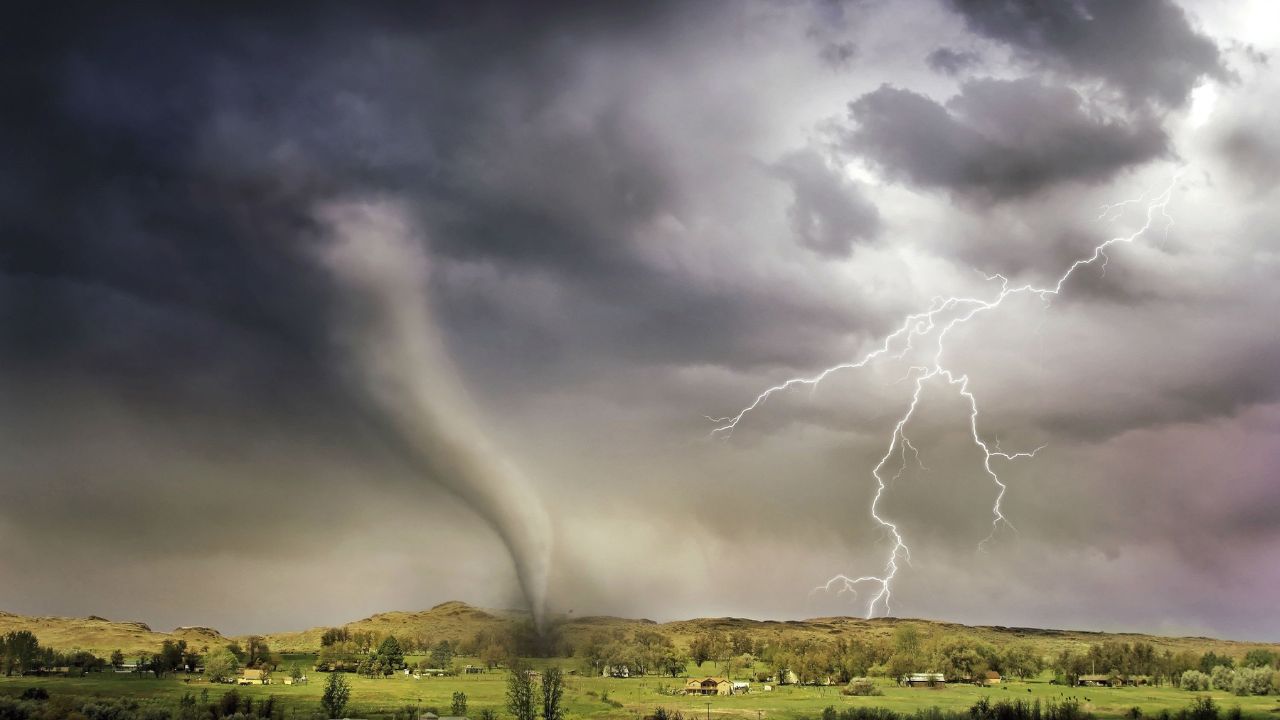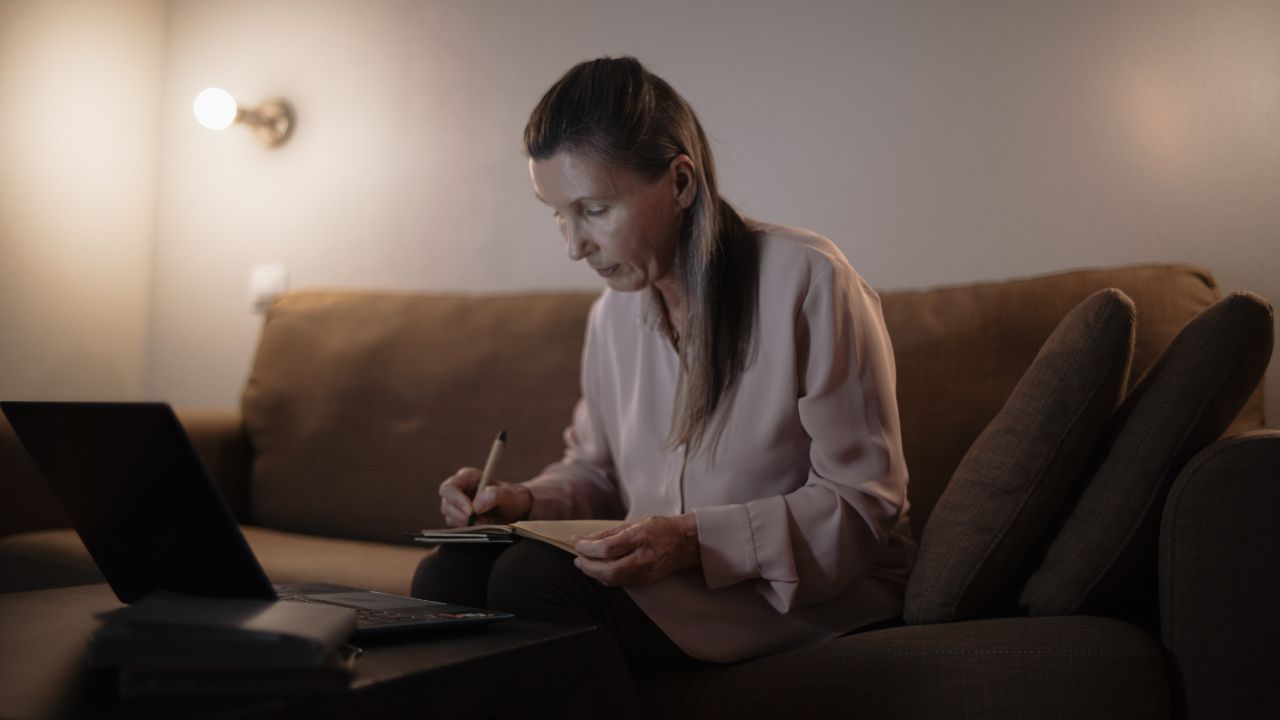Severe storms have swept across the United States, spawning tornadoes, hail, and damaging winds in multiple states. In Hawaii, both Maui and the Big Island have been hit by fire storms with severe destruction.
Unfortunately, that means that some people whose houses are still intact are going to experience damage to their homes, whether it be roof damage, flooding, leaks, structural issues, or something else.
What’s even more unfortunate is that this is a time when scammers will prey on and try to take advantage of innocent down-and-out Americans who are just trying to get their homes back to normal.
Here’s what you can do to avoid the double whammy of a post-disaster scam.

How do scammers use storm season to their advantage?
If you’ve ever had damage to your home from severe weather, you know how stressful the process can be to get your home back to normal. The process can be intimidating and long-winded, which is why scammers will create fake deals and claim that they can get your home fixed quicker than anyone else.
They will claim to be a contractor that can fix your home fast and will ask for you to pay them directly in cash. Before you know it, your money is gone, the job still needs to be done, and the “contractor” has disappeared without a trace. This is all too common and can be avoided with the proper steps taken.

What should I do if my home has been damaged?
The first step you should take after your home has been damaged is to reach out to your home insurance provider. Many insurance companies also offer mobile apps that allow you to report and track damage claims. These apps often have features that can help you identify reputable contractors and avoid scams. For example, the app may provide a list of recommended contractors that the insurance company has vetted or provide tips on how to spot common scams.
Once you get the list of contractors from your home insurance provider, start doing your research on each one. One way to do this is through the Better Business Bureau, which is there to help you see if these companies have ever had any complaints, how they go about resolving complaints, and if they’re worth hiring.
You do not have to use any of the companies that your home insurance provider recommends. However, you must do the research before hiring anyone, whether they were recommended to you or not.
MORE: HOW TO PREVENT PHONE SCAMS AGAINST OLDER LOVED ONES

What if I want to go with a different contractor?
If you decide that you do not want to use a company recommended by your insurance, there are many online directories that you can use to find reputable contractors in your area. These directories often include reviews and ratings from other customers, which can help consumers make informed decisions about who to hire. Examples of such directories include HomeAdvisor, Angie’s List, and Yelp.
Don’t forget about using your social media. It can also be a valuable resource in dealing with storm damage. You can use social media to ask for recommendations from your friends and family or to join local groups where you can get advice from others who have dealt with similar situations. You can also see if the company you’re interested in using has a social media presence or a website so that you can see some previous work they’ve done.
Overall, the key is to stay informed and use technology to your advantage. By using the resources available to you, you can protect yourself from scammers and ensure that you get the help you need to repair any damage caused by a storm.
What red flags should I look for?
One of the biggest scam tactics that the Better Business Bureau has seen is when a contractor asks for you to pay them directly in cash or give them the check that you’ve received from your insurance company. Often times when insurance companies pay claims, they will send one check that is meant for multiple contractors, such as a roofing team, siding team, and so on. You should never hand that insurance check over to a contractor or pay them in cash.
 The best way to pay a contractor is via credit card. This way, you have their name and that you paid them on file, and you can reach out to your credit card company in case anything goes wrong. If you ever do need to file a complaint, contact the Better Business Bureau, where you can file a claim 24/7.
The best way to pay a contractor is via credit card. This way, you have their name and that you paid them on file, and you can reach out to your credit card company in case anything goes wrong. If you ever do need to file a complaint, contact the Better Business Bureau, where you can file a claim 24/7.
How to track and report storm damage scams
There are websites dedicated to tracking and reporting scams related to storm damage. You can use these sites to stay informed about common scams and to report any suspicious activity you encounter. Here are a few examples:
The National Center for Disaster Fraud (NCDF) – You can call their hotline at 1-866-720-5721 to report fraudulent activity related to natural disasters. They also have a website where you can report scams and find resources on how to protect yourself from fraud.
Better Business Bureau (BBB) – The BBB has a Scam Tracker tool on its website where you can search for scams related to storm damage and other types of fraud.
Federal Emergency Management Agency (FEMA) – FEMA has a webpage dedicated to disaster fraud where you can learn how to recognize and report scams related to storm damage.
StopFraud.gov – This website is maintained by the United States Department of Justice and provides information on how to report and prevent fraud related to all-natural disasters.
It’s important to be vigilant and cautious when dealing with storm damage and always verify the legitimacy of contractors and repair services before hiring them.

How to stay safe and connected during and after a storm
Invest in a personal locator beacon
Before a storm even hits, consider investing in a personal locator beacon, also known as a PLB, which is a small, handheld device that transmits a distress signal to emergency services in the event of an emergency. It uses satellite technology to pinpoint your exact location and can alert rescuers where cell coverage may be limited or non-existent.
Here is a list of our 5 best personal locator beacons.
MORE: THE MOST IMPORTANT SOS TOOL EVER MADE
Use Apple’s Emergency SOS feature
Also, if you have no cell phone service after a storm yet own an iPhone 14 or an iPhone 14 pro, you can use the feature – Emergency SOS via satellite. Apple has partnered with satellite communications company Globalstar to create the feature and uses satellite connectivity to put you in touch with local emergency dispatch centers if they are in an area with no cellular coverage.
Got an Android? Emergency SOS for Android works over cellular networks but not satellite
Android follows Apple into helping with personal safety and getting help in an emergency with their version of Emergency SOS on Android. Keep in mind that Android operating system functionality varies from one phone maker to the next. Here is a helpful Android support page for getting your Android phone ready for an emergency.
Have a well-stocked emergency kit
I also recommend you have a well-stocked emergency kit that includes essential supplies such as non-perishable food, water, first aid supplies, and a battery-powered or hand-crank radio. It’s also a good idea to have a plan in place for where to go and what to do in the event of a severe weather emergency.
Kurt’s key takeaways
By taking these precautions and being prepared ahead of time, you can increase your chances of staying safe and minimizing the impact of a storm on you and your loved ones.
It is also important to exercise caution and remain vigilant after a severe storm; as I mentioned, scammers often exploit the vulnerability of innocent individuals like us. Thus, it is imperative to stay alert and take necessary precautions.
Have you ever experienced storm damage or encountered a scam related to it? Share your story with us and let us know how you dealt with it by commenting below.
FOR MORE OF MY SECURITY ALERTS, SUBSCRIBE TO MY FREE CYBERGUY REPORT NEWSLETTER HERE
Related:
- Digital burglaries: The threat from your smart home devices
- Do these revealing photos of your home belong here without permission?


